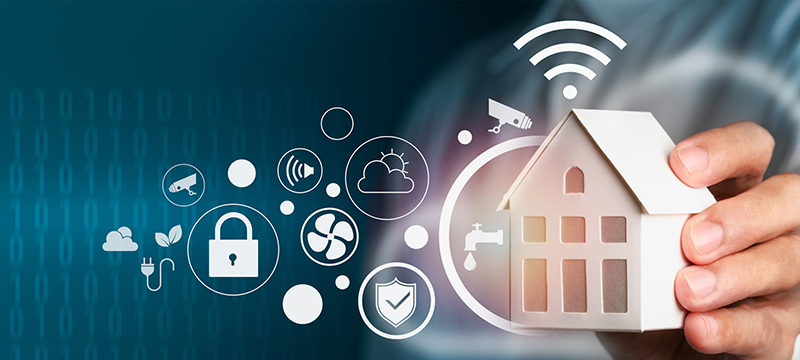The way we interact with our homes has undergone a profound transformation in recent years. Thanks to the rise of smart technologies and digital connectivity, modern households are no longer limited to traditional appliances and manual systems. At the forefront of this change is the Internet of Things (IoT), a network of interconnected devices that communicate and share data with each other to improve convenience, efficiency, and quality of life.
One of the most impactful developments in this space is the growing adoption of the Internet of Things (IoT) for home, which enables homeowners to automate and remotely manage various systems and devices. This technology seamlessly integrates everything from lighting and heating to security and entertainment, creating an intelligent and responsive living environment tailored to individual needs.
Seamless Automation and Convenience
One of the key advantages of IoT in the home is automation. Devices equipped with sensors and connectivity can be programmed to perform tasks without human intervention. For instance, smart lighting systems can adjust brightness levels based on the time of day or occupancy in a room, while smart thermostats can learn your habits and automatically regulate indoor temperatures.
This kind of automation simplifies daily routines. You no longer need to remember to adjust the thermostat before leaving for work or worry about turning off the lights when leaving a room. The home becomes a dynamic and responsive space that anticipates your needs and adjusts accordingly.
Enhanced Home Security
IoT has brought a significant evolution in home security systems. Smart security cameras, motion detectors, door and window sensors, and video doorbells are now more accessible and user-friendly than ever. These systems allow you to monitor your property in real time, receive alerts on your smartphone, and even control access to your home remotely.
For example, if a motion sensor detects activity while you’re away, the system can immediately notify you and activate cameras or alarms. You can also view live footage and speak to visitors using integrated two-way communication features. This not only deters potential intruders but also provides peace of mind when you’re not at home.
Energy Efficiency and Sustainability
Another transformative impact of IoT is its contribution to energy efficiency. Smart devices monitor and manage energy usage in real time, providing insights that help reduce unnecessary consumption. Smart plugs, for instance, can turn off power to devices that are not in use, while energy monitoring systems can identify high-usage appliances and recommend more efficient habits.
By optimizing the operation of heating, cooling, and lighting systems, IoT helps homeowners cut down on utility bills and reduce their carbon footprint. In a time where environmental sustainability is increasingly important, IoT-enabled homes offer a practical way to contribute to greener living.
Improved Health and Wellness
The IoT is also finding its way into the realm of health and wellness. Smart air purifiers, humidifiers, and climate control systems monitor air quality and adjust conditions to create a healthier indoor environment. Wearable health trackers can sync with home systems to provide data on sleep patterns, physical activity, and more.
Furthermore, IoT-enabled kitchen appliances can help monitor nutrition and dietary habits, while voice assistants and mobile apps provide access to guided meditation, exercise routines, and mental wellness programs. Together, these features contribute to a holistic approach to well-being within the comfort of your own home.
Entertainment and Connectivity
Entertainment systems have also become more intelligent thanks to IoT. Smart TVs, speakers, and streaming devices can be integrated into a central home automation system, allowing you to control music, movies, and television from a single interface or through voice commands. You can create customized scenes for different moods—such as a movie night setting with dimmed lights and surround sound—at the touch of a button.
The ability to synchronize multiple devices ensures a seamless and immersive entertainment experience. Whether you’re hosting a gathering or enjoying a quiet night in, IoT allows for effortless control and personalization.
Remote Access and Control
Perhaps one of the most convenient features of IoT is remote access. Through smartphone apps or cloud-based platforms, users can monitor and control their home systems from anywhere in the world. This allows you to check if you left the oven on, adjust the thermostat before you arrive, or unlock the door for a guest—all from your mobile device.
This level of accessibility is especially valuable for frequent travelers, working professionals, and busy families. It ensures that your home is always under control, no matter where you are.
Future Potential of IoT in Homes
As the Internet of Things continues to evolve, the possibilities for home integration will only expand. Advancements in artificial intelligence, machine learning, and 5G connectivity promise even more responsive, adaptive, and efficient home environments. Devices will not only communicate with each other more effectively but also learn from user behavior to deliver increasingly personalized experiences.
In the near future, we can expect more intuitive systems that predict our needs, reduce manual input, and seamlessly integrate with other aspects of daily life, such as work, transportation, and healthcare.
Conclusion
The Internet of Things is transforming the way we live at home, bringing greater comfort, security, and efficiency to everyday life. From automated lighting and climate control to advanced security and health monitoring, IoT technologies empower homeowners to create smarter, more responsive living spaces. As innovation continues, embracing these connected systems will become an essential part of modern home design and management, offering long-term benefits in both convenience and sustainability.

